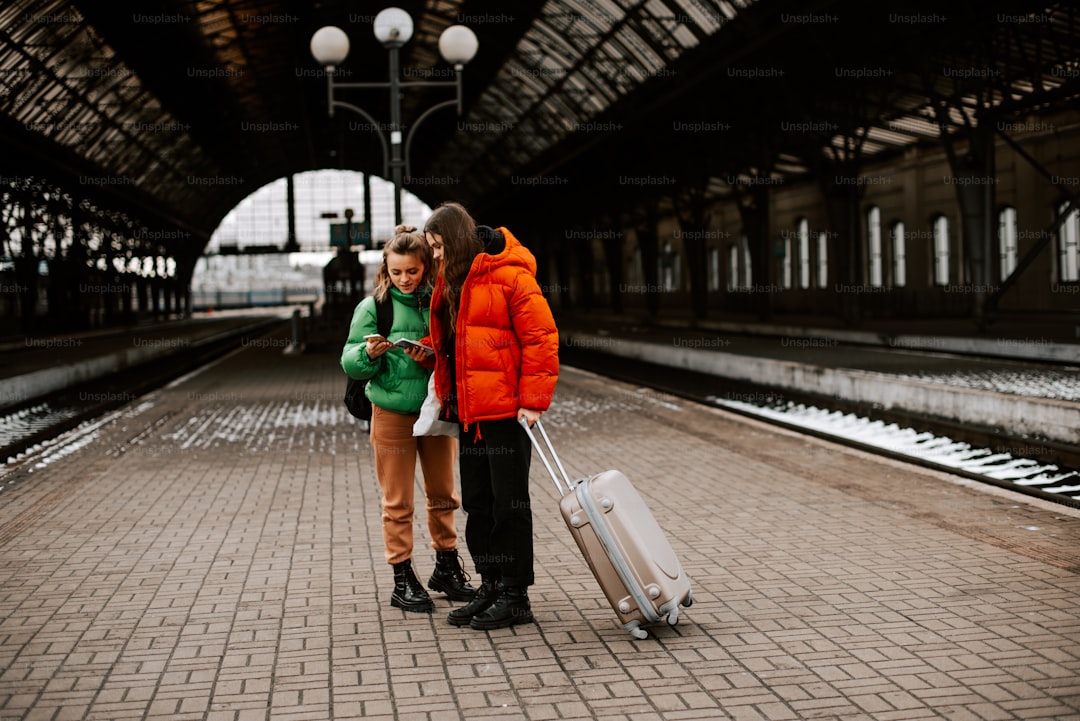Living Light on the Road Building a Green Nomad Community

Introduction
The idea of a digital nomad has evolved far beyond the image of a laptop‑clad wanderer sipping coffee in a cheap hostel. Today more travelers are asking how they can move lightly not just in terms of possessions but also in the ecological footprint they leave behind. “Living light on the road” therefore means two things at once: carrying only what truly supports a mobile lifestyle and adopting practices that keep the planet healthy while you roam.
A green nomad community brings those two strands together. It is a network of people who share tools, knowledge, and values that make sustainable travel possible at scale. When individuals cooperate, they can create shared infrastructure, negotiate better deals on renewable energy, and amplify the impact of small actions. This article explores the philosophy, the practical steps, and the social dynamics required to build a thriving green nomad community while living light on the road.
Core Principles
Minimalism as a Foundation
Minimalism is more than a tidy wardrobe. It is a mindset that asks, What do I really need to live well while moving? By stripping away excess, you reduce the weight you carry, the resources required to produce those items, and the waste generated when they are eventually discarded.
Key minimalist questions for a nomad:
- Which items serve multiple purposes?
- Can a digital version replace a physical one?
- How often will I actually use this object?
Answering honestly leads to a lean, functional pack that supports both work and adventure.
Sustainability as a Guiding Star
Sustainability in the nomadic context means aligning every decision with the goal of reducing environmental harm. This includes choosing low‑impact transportation, supporting renewable energy, minimizing waste, and respecting local ecosystems. A sustainable approach also embraces the concept of regenerative travel – leaving a place in a better condition than you found it.
Community as a Catalyst
No nomad is an island. A community of like‑minded travelers creates economies of scale, shared learning, and emotional support. Community members can pool resources such as solar panels, bulk‑buy biodegradable products, and co‑host workshops on green living. The network becomes a living laboratory where ideas are tested, refined, and spread.
Choosing Gear that Is Light and Green
Materials Matter
Opt for items made from recycled or responsibly sourced materials. Examples include:
- Backpacks crafted from reclaimed plastic bottles or recycled polyester.
- Clothing from organic cotton, hemp, or Tencel fibers that require less water and chemicals.
- Water bottles and travel mugs made from stainless steel rather than single‑use plastic.
Multi‑Function Tools
A high‑quality multi‑tool can replace a toolbox. Look for versions that incorporate a bottle opener, screwdriver, and scissors. A compact travel towel made of quick‑dry microfiber can serve as a blanket, a cleaning rag, or a yoga mat.
Energy Solutions
Power is essential for remote work. Choose renewable‑focused devices:
- Portable solar panels with high conversion efficiency, folded for easy packing.
- Battery packs that are certified for safety and have a long cycle life.
- LED lights that consume minimal wattage.
Packing Smart
Roll clothing instead of folding to maximize space. Use compression sacks for bulkier items like jackets. Keep a “one‑in, one‑out” rule: every new item must replace an existing one.
Sustainable Travel Practices
Low‑Impact Transportation
When possible, choose modes of travel that emit the least CO₂ per passenger‑kilometer.
- Bicycles and electric scooters for short urban trips.
- Trains over short‑haul flights, especially in regions with electrified rail networks.
- When flying is unavoidable, select airlines that have carbon offset programs and modern, fuel‑efficient fleets.
Carbon Offsetting with Integrity
If you must fly, calculate the emissions of your journey and invest in reputable offset projects that focus on renewable energy, reforestation, or methane capture. Look for certifications such as Gold Standard or Verified Carbon Standard.
Slow Travel Philosophy
Spending longer periods in each destination reduces the frequency of transport, allowing deeper cultural immersion and lower cumulative emissions. It also gives you time to contribute positively to the local community.
Finding Green Accommodation
Eco‑Hostels and Green Hotels
Many hostels now advertise eco‑certifications. Look for features like:
- Solar‑powered water heating.
- Waste‑separation stations.
- Use of locally sourced, organic food in on‑site kitchens.
Co‑Living Spaces
Co‑living houses designed for nomads often incorporate shared resources:
- Community kitchens that reduce the need for individual cooking appliances.
- Centralized solar arrays and battery storage.
- Composting toilets and grey‑water recycling.
Short‑Term Rentals with a Conscience
Platforms such as Airbnb now allow filters for “green” listings. Check for hosts who provide recycling bins, energy‑saving appliances, and clear instructions on local waste disposal.
Camping with Care
If you choose wild camping, follow the Leave No Trace principles:
- Camp at least 200 meters from water sources.
- Use a portable stove rather than building a fire.
- Pack out all waste, including biodegradable items that may not decompose quickly in certain climates.
Building a Green Nomad Community
Digital Platforms
A dedicated online hub can serve as the backbone of the community. Features to include:
- A resource library with guides on solar setup, waste management, and local green initiatives.
- A marketplace for buying, selling, or swapping gear.
- Event calendars for meet‑ups, workshops, and clean‑up drives.
Co‑Living Hubs
Physical co‑living hubs act as anchors for the community. They can be established in cities with a high concentration of nomads or in rural areas where regenerative projects are underway. Core components of a hub:
- Shared solar power system with enough capacity for communal spaces and individual charging stations.
- Communal garden where members grow herbs, vegetables, or mushrooms, reducing reliance on packaged food.
- Tool library stocked with items such as repair kits, gardening tools, and sustainable cooking equipment.
Partnerships with Local Organizations
Collaborate with local NGOs, environmental groups, and municipalities. Joint initiatives could include:
- Beach or trail clean‑up days that invite both travelers and residents.
- Workshops on upcycling waste into useful products.
- Volunteer programs that support reforestation or renewable energy installations.
Knowledge Exchange
Host regular “skill‑share” evenings where members teach each other:
- How to repair a laptop or smartphone instead of replacing it.
- Basics of solar panel maintenance.
- Cooking plant‑based meals with local ingredients.
Food and Nutrition for the Light, Green Traveler
Plant‑Based Focus
A diet centered on plant foods has a lower carbon footprint than meat‑heavy meals. It also reduces the weight of food you need to carry. Simple strategies:
- Pack dried legumes, nuts, and seeds for high‑protein snacks.
- Use a compact rice cooker or collapsible pot to prepare grains and beans.
- Purchase fresh produce from local markets to support the community and minimize transport emissions.
Zero‑Waste Cooking
- Bring reusable containers, silicone bags, and beeswax wraps to store leftovers.
- Choose bulk spices in refillable tins.
- Use a portable coffee press instead of disposable pods.
Hydration
A stainless steel water bottle eliminates single‑use plastic. Refill it at public fountains, cafes, or filtered water stations. In areas where water quality is questionable, a lightweight UV purifier or a filter straw ensures safe drinking without the need for bottled water.
Energy and Power on the Move
Solar Power Basics
A foldable solar panel rated at 100‑150 watts can generate enough electricity to charge a laptop, phone, and LED lights over the course of a sunny day. Position the panel at a 30‑degree angle toward the sun for optimal capture.
Battery Management
- Use a lithium‑iron‑phosphate (LiFePO₄) battery for safety and longevity.
- Keep the battery between 20 % and 80 % charge when storing for long periods to prolong its life.
- Pair the battery with a smart charge controller that prevents over‑charging from solar input.
Efficient Devices
Select low‑power laptops (e.g., those with ARM processors) and energy‑saving monitors. Enable power‑saving modes on all devices and disconnect peripherals when not in use.
Backup Options
A small hand‑crank or kinetic charger can provide emergency power for phones or GPS units when sunlight is scarce.
Waste Management While Traveling
The Three‑Bucket System
- Recycle: Separate plastics, glass, metal, and paper if facilities exist.
- Compost: Food scraps can be composted in community gardens or biodegradable bags in designated bins.
- Landfill: Items that cannot be recycled or composted should be minimized.
Portable Solutions
- Carry a compact, reusable waste bag for collecting non‑recyclable items until you find a proper disposal point.
- Use a collapsible compost bin for organic waste when staying in a co‑living hub or eco‑hostel.
Reducing Single‑Use Items
- Refuse plastic straws, cutlery, and disposable plates.
- Bring your own set of bamboo or metal utensils.
- Opt for digital receipts and tickets to cut paper waste.
Financial Strategies for the Green Nomad
Remote Work Income
Focus on skill sets that are in demand globally and can be delivered digitally:
- Web development, graphic design, content creation, and digital marketing.
- Online tutoring, language instruction, or consulting.
Budgeting for Sustainability
Allocate a portion of your income to green expenses such as:
- Solar equipment purchase or lease.
- Carbon offset contributions.
- Membership fees for co‑living spaces that prioritize renewable energy.
Minimalist Money Management
- Use cash‑less payment methods that reduce the need for physical receipts.
- Choose banks that invest in sustainable projects or offer “green” accounts.
Income Diversification
- Offer workshops on sustainable travel or minimalism to fellow nomads.
- Sell digital products like e‑books, templates, or photography.
Real‑World Examples
The Solar Nomad Hub in Lisbon
A group of digital nomads converted an old warehouse into a co‑living space powered entirely by rooftop solar panels and a community battery. Members share a communal kitchen garden, a tool library, and a weekly skill‑share night. The hub’s operating costs are offset by a small membership fee, and any surplus is donated to a local reforestation project.
Zero‑Waste Road Trip Across Southeast Asia
A couple traveling by train and motorbike carried only reusable containers, a compact solar charger, and a lightweight tent made from recycled polyester. They cooked most meals in local markets using a portable induction stove, sourced produce from street vendors, and participated in beach clean‑ups in each coastal town. Their carbon footprint was reduced by 70 % compared with a typical backpacking trip of similar duration.
Digital Nomad Community on a Remote Island
An online platform linked remote workers who wanted to spend extended periods on a small island with limited infrastructure. The community pooled funds to install a micro‑hydro generator that supplies power to a shared co‑working space. Members rotate responsibilities for maintaining the system, composting organic waste, and organizing cultural exchange events with the island’s residents.
Practical Steps to Start Building Your Green Nomad Community
-
Define Your Values
Write down the core principles that will guide your community – minimalism, renewable energy, zero waste, cultural respect. -
Find a Core Group
Connect with like‑minded travelers through forums, social media groups, or meet‑ups. Start with a small team of committed individuals. -
Choose a Pilot Location
Look for a city or town with a growing nomad population, good public transport, and an interest in sustainability. -
Secure a Physical Space
Options include renting a house, partnering with an existing hostel, or using a coworking space that supports green initiatives. -
Install Renewable Infrastructure
Begin with a modest solar array or portable wind turbine. Pair it with a battery system and smart chargers. -
Create Shared Resources
Set up a tool library, a communal kitchen, and a digital knowledge base. -
Launch Community Activities
Host an opening event, a clean‑up day, or a skill‑share workshop to attract members and local partners. -
Develop a Communication Hub
Use platforms like Discord, Slack, or a custom website to keep members informed, share resources, and coordinate events. -
Measure Impact
Track metrics such as electricity generated, waste diverted, carbon offset purchases, and member satisfaction. Use the data to improve and to showcase the community’s value to potential partners. -
Scale Thoughtfully
When the pilot proves successful, replicate the model in other locations, always adapting to local culture and environmental conditions.
Overcoming Common Challenges
Limited Access to Renewable Energy
In regions without reliable sunlight, combine solar with portable wind turbines or battery charging from the grid during off‑peak hours. Community negotiations with local utilities can secure greener electricity tariffs.
Cultural Sensitivity
Respect local customs and traditions. Engage community members in dialogue with residents, and involve locals in planning activities. This builds trust and ensures that projects are welcomed rather than imposed.
Financial Constraints
Start with low‑cost solutions such as shared solar chargers or a group purchase of bulk eco‑friendly supplies. Apply for grants aimed at sustainable tourism or community development.
Maintaining Engagement
Regularly schedule events, share success stories, and recognize members’ contributions. A sense of belonging keeps the community active even when members are traveling between hubs.
Future Outlook
The convergence of remote work technology, climate awareness, and a desire for purposeful travel is creating fertile ground for green nomad communities. As more travelers demand sustainable options, cities and towns will likely respond with policies that support renewable infrastructure, waste reduction programs, and affordable co‑living spaces.
Innovation in lightweight solar materials, portable energy storage, and biodegradable packaging will further lower the barriers to living light on the road. When combined with a strong community ethos, these advances can transform the nomadic lifestyle from a niche hobby into a scalable model for low‑impact, globally connected living.
The vision is simple: a network of mobile individuals who carry only what they need, power their devices with clean energy, leave no trace, and collectively nurture the places they visit. By embracing minimalism, sustainability, and community, the green nomad movement can become a powerful force for planetary health while offering a rich, fulfilling way of life.
Take the first step today. Assess your current gear, adopt one new sustainable habit, and reach out to a fellow traveler who shares your values. Each small action adds up, and together they build the foundation for a vibrant, green nomad community that travels lightly and lives responsibly.
Random Posts

First Steps Into Nomad Living
Discover how to trade a fixed address for a suitcase, shift your mindset to embrace uncertainty, and get a clear roadmap, realistic budget, minimalist packing list, and the confidence to start your nomadic lifestyle
3 days ago

Top Latin American Destinations for Location Independent Professionals
Discover why Latin America is a remote work haven: vibrant culture, low cost, reliable internet, digital nomad visas and coworking hubs. Explore top cities like Medellín, Mexico City, Buenos Aires and more
1 month ago

From Beaches to Mountains Ideal Nomad Locations and Tools
Discover top beach and mountain destinations for digital nomads and the must-have gear that keeps you productive, comfortable and safe wherever you work.
1 month ago

Nomad Essentials A Complete Guide to Apps, Books and Podcasts
Discover the ultimate toolkit for digital nomads: essential apps, must-read books, and top podcasts that keep you productive, inspired, and connected wherever you roam.
2 months ago

Mastering Remote Work and Productivity for Digital Nomad Entrepreneurs
Learn how to turn the freedom of digital nomad life into consistent productivity with proven systems, habits and tools for remote work, finance, and client management so you can thrive anywhere.
1 month ago
Latest Posts

Essential Software Every Remote Professional Should Use
Master remote work with essential tools: instant messaging like Slack, high definition video calls such as Zoom, and asynchronous voice apps. Streamline communication, stay connected and boost productivity.
1 day ago

Mastering Remote Work Productivity for Digital Nomads and Freelancers
Learn proven habits, tools, and tactics that help digital nomads and freelancers stay focused, deliver quality work, and maintain a sustainable lifestyle while traveling the world.
1 day ago

Tech‑Friendly European Towns Perfect for Remote Living
Discover Europe’s best small towns where fast internet, affordable living and vibrant tech communities let you work remotely while soaking up historic charm, lakeside views or mountain air.
1 day ago